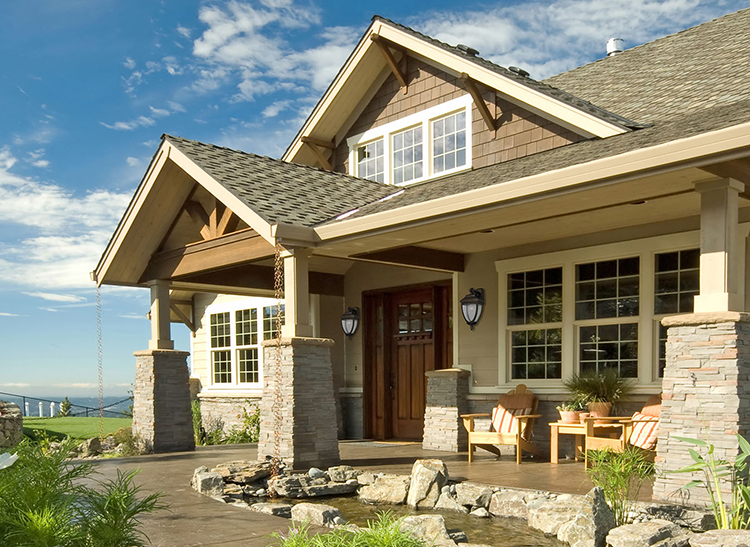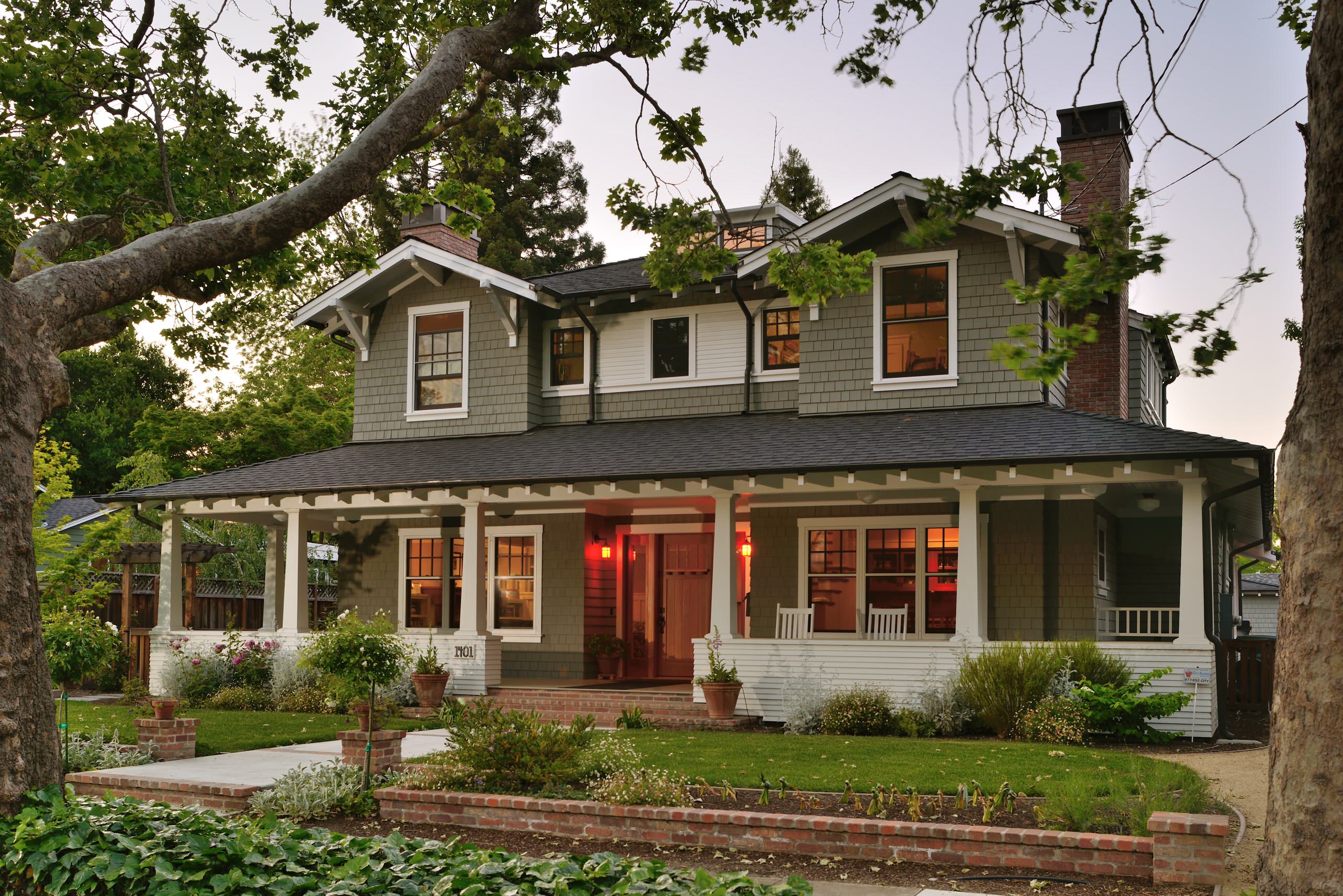The Duty of Arts & & Crafts Architects in Elevating Architectural Providers in Residential Layout
Arts and Crafts architects substantially affect property style with their commitment to craftsmanship and sustainability. They prioritize handcrafted information and all-natural materials, which improve both aesthetics and neighborhood identity. By including clients in the style process, these architects create unique living rooms that reverberate with personal tastes. This strategy elevates inquiries regarding the future trajectory of residential architecture and its possible effect on neighborhood characteristics. craftsman style house. What exists ahead for this timeless layout viewpoint?

The Principles of Arts and Crafts Architecture
The significance of Arts and Crafts architecture depends on its commitment to workmanship and simpleness. This architectural movement arised in the late 19th century as a response to industrialization, highlighting the value of handcrafted information and all-natural products. The principles of Arts and Crafts architecture focus on capability and consistency with the setting. Structures commonly include low-pitched roof coverings, broad eaves, and subjected rafters, advertising a sense of unity with nature.
Artisans played a significant duty in this design, usually incorporating attractive elements like stained glass, tiles, and woodwork, which mirror regional craftsmanship. The color combination tends to be earthy and suppressed, allowing buildings to blend flawlessly into their environments. Furthermore, the style motivates open layout and communal rooms, cultivating a sense of togetherness. Generally, the concepts of Arts and Crafts architecture celebrate the charm of simpleness and the value of human connection to both nature and area.

Lasting Practices in Residential Design
While the need for eco accountable living remains to expand, sustainable practices in domestic design have obtained considerable grip among architects and house owners alike. Architects are increasingly including energy-efficient modern technologies and lasting products into their designs, aiming to reduce carbon impacts and improve energy preservation. Approaches such as passive solar style, eco-friendly roofing systems, and rainwater harvesting systems are becoming basic components of modern residential architecture.
Furthermore, the choice of locally sourced materials decreases transport emissions and supports local economic situations. Focus on all-natural light and ventilation not only improves indoor air quality yet also decreases dependence on fabricated lights and environment control systems. These sustainable techniques reflect a commitment to maintaining the setting while supplying home owners with comfortable, effective home. As understanding of ecological problems grows, the combination of sustainability in property layout is positioned to become a specifying attribute of contemporary architecture, led by the principles developed by Arts and Crafts architects.
Modification and Personalization in Home Design
Customization and customization in home layout have actually emerged as key patterns in action to the expanding wish for distinct living environments that reflect individual preferences and way of livings. Home owners significantly seek to tailor spaces that resonate with their individualities, causing a much more meaningful connection with their space. craftsman style house. This motion motivates architects to involve customers in the layout procedure, fostering collaboration that guarantees the final result symbolizes the home owner's vision
Components such as bespoke formats, custom materials, and tailored finishes enable a varied variety of expressions in property style. Arts and Crafts architects play a pivotal duty in this development, emphasizing workmanship and quality. Their emphasis on integrating artistic aspects with functionality guarantees that each home is not just aesthetically pleasing but also uniquely fit to the inhabitants' requirements. Subsequently, this emphasis on customization improves the overall residential experience, developing areas that are both personal and long-lasting.

The Impact of Arts and Crafts Architects on Area Aesthetics
As areas progress, the influence of Arts and Crafts architects substantially shapes their visual landscape. By highlighting handmade information, natural products, and conventional building and construction methods, these architects develop homes that resonate with he said their environments. Their styles usually integrate neighborhood plants, appearances, and colors, cultivating a sense of harmony in between developed settings and nature.
Furthermore, the Arts and Crafts activity promotes neighborhood identification through building connection. By urging property owners to embrace comparable design principles, areas develop a cohesive character that boosts aesthetic appeal. This architectural harmony not just enhances the visual page experience however likewise instills a feeling of pride amongst homeowners.
Additionally, the concentrate on sustainability and workmanship in Arts and Crafts architecture aligns with contemporary worths, making these layouts relevant in contemporary settings. Eventually, Arts and Crafts architects add substantially to the general charm and social stability of neighborhoods, leaving a long lasting effect on their visual legacy.

Future Patterns in Arts and Crafts Architecture
With a boosting emphasis on sustainability and personalization, future patterns in Arts and Crafts architecture are positioned to mix standard workmanship with modern-day development - craftsman style house. Architects are likely to prioritize environment-friendly materials, utilizing recovered timber and all-natural stone to improve the sustainability of residential layouts. The assimilation of wise home innovation will become typical, enabling customized living experiences without compromising visual stability
Moreover, the rebirth of artisanal methods will promote a renewed admiration for handcrafted components, such as bespoke cabinets and customized floor tile work. Future layouts may also show a focus on community-oriented spaces, motivating interaction and connection amongst locals. Exterior living areas will obtain prominence, flawlessly integrating nature into the home setting. As Arts and Crafts architecture develops, it will certainly continue to recognize its roots while adjusting to modern needs, creating unified rooms that reflect private worths and lifestyles.
Frequently Asked Inquiries
What Inspired the Arts and Crafts Motion in Architecture?
The Arts and Crafts activity in architecture was motivated by a response against automation, emphasizing handcrafted high quality, all-natural products, and a go back to conventional craftsmanship, aiming to produce unified, useful spaces that celebrated creativity and individuality.
How Do Arts and Crafts Architects Collaborate With Clients?
Arts and crafts architects team up with clients with open dialogue, focusing on individual requirements and aesthetic appeals. They stress workmanship and sustainability, cultivating a collaboration that incorporates the customer's vision with the engineer's knowledge in style and products.
What Products Are Generally Made Use Of in Arts and Crafts Residences?
Usual products in Arts and Crafts homes consist of all-natural wood, stone, and brick, highlighting craftsmanship and organic aesthetic appeals. These aspects produce a warm, inviting environment, showing the motion's commitment to high quality and simplicity in design.
Just how Do Arts and Crafts Layouts Improve Indoor Living Areas?
Arts and Crafts styles enhance interior home by promoting natural light, open flooring strategies, and handcrafted information. These aspects foster a warm, welcoming ambience, motivating a connection in between citizens and official site their atmospheres through thoughtful, useful aesthetics.
What Are Some Famous Instances of Arts and Crafts Architecture?
Famous examples of Arts and Crafts architecture include the Wager Residence, Greene and Greene's work of art in California, and the Robie Residence by Frank Lloyd Wright. These frameworks showcase handcrafted information and harmony with nature, specifying the motion's essence.